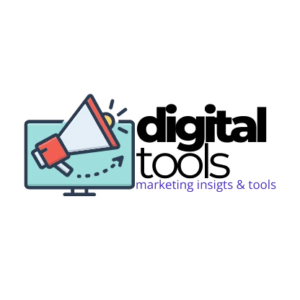Introduction
In today’s fast-paced work environment, seamless collaboration is key to success. Whether you’re managing a remote team, working on a startup, or coordinating a group project, having the right free tools can make all the difference.
But with so many options available, how do you choose the best ones? And more importantly, how do you use them effectively?
In this guide, we’ll explore the top free collaboration tools, how to leverage them for maximum efficiency, and real-world strategies to keep your team aligned—without breaking the bank.
Table of Contents
Why Free Collaboration Tools Matter
Before diving into specific tools, let’s understand why they’re essential:
- Cost-Effective: Small businesses, startups, and freelancers can access powerful features without paying a dime.
- Accessibility: Cloud-based tools allow teams to work from anywhere, anytime.
- Scalability: Many free plans offer enough functionality for small to medium-sized teams.
- Integration: Most tools sync with other apps, creating a seamless workflow.
According to a Statista report, over 80% of businesses use at least one collaboration tool, proving their growing necessity.
Top Free Collaboration Tools & How to Use Them
1. Trello – Visual Project Management
Best for: Task organization, Kanban-style workflows
Trello’s intuitive drag-and-drop boards make it perfect for managing tasks visually.
How to Use It Effectively:
- Create boards for different projects.
- Use lists (e.g., “To-Do,” “In Progress,” “Done”).
- Assign tasks with due dates and labels for priority.
- Integrate with Slack or Google Drive for smoother workflows.
Pro Tip: Use the Butler automation feature (free for basic use) to automate repetitive tasks.
2. Slack – Instant Team Communication
Best for: Real-time messaging, file sharing
Slack keeps conversations organized in channels, reducing email clutter.
How to Use It Effectively:
- Set up channels by project, department, or topic.
- Use threads to keep discussions clean.
- Integrate with Google Drive, Trello, or Zoom.
- Enable /remind commands for follow-ups.
Pro Tip: Create a #general channel for announcements and a #random channel for casual chats to maintain engagement.
3. Google Workspace (Docs, Sheets, Drive) – Cloud-Based Collaboration
Best for: Document sharing, real-time editing
Google’s suite is a powerhouse for collaborative writing, spreadsheets, and file storage.
How to Use It Effectively:
- Share documents with “Comment” or “Edit” permissions.
- Use version history to track changes.
- Organize files in shared Drive folders.
- Collaborate in real-time with @mentions for feedback.
Pro Tip: Use Google Forms for quick team surveys or feedback collection.
4. Asana – Task & Project Tracking
Best for: Detailed project planning, deadlines
Asana’s free plan supports up to 15 team members, making it ideal for small teams.
How to Use It Effectively:
- Break projects into tasks and subtasks.
- Set deadlines and assign owners.
- Use the Calendar View to track progress.
- Integrate with Gmail or Microsoft Teams.
Pro Tip: Use templates for recurring projects to save time.
5. Zoom – Video Conferencing & Webinars
Best for: Virtual meetings, screen sharing
Zoom’s free tier allows 40-minute group meetings, perfect for quick sync-ups.
How to Use It Effectively:
- Schedule recurring meetings for consistency.
- Use Breakout Rooms for smaller group discussions.
- Record sessions (if permitted) for future reference.
- Share your screen for live collaboration.
Pro Tip: Enable virtual backgrounds for a professional look.
6. Notion – All-in-One Workspace
Best for: Knowledge management, wikis, databases
Notion combines notes, tasks, and databases in one flexible platform.
How to Use It Effectively:
- Create a team wiki for policies and resources.
- Use Kanban boards for project tracking.
- Build custom templates for recurring workflows.
- Share pages with specific team members.
Pro Tip: Start with a pre-built template (like “Meeting Notes” or “Project Tracker”) to save setup time.
7. ClickUp – Unified Productivity Platform
Best for: Agile teams, time tracking
ClickUp’s free plan offers robust features like task dependencies and time tracking.
How to Use It Effectively:
- Organize tasks in List, Board, or Calendar View.
- Set priorities (Low, Medium, High).
- Use Docs for collaborative note-taking.
- Track time with the built-in timer.
Pro Tip: Enable Automations to reduce manual work.
Best Practices for Maximizing Free Tools
- Combine Tools for a Seamless Workflow
- Example: Trello (tasks) + Slack (communication) + Google Drive (files).
- Set Clear Guidelines
- Define which tool is used for what purpose (e.g., Slack for quick chats, email for formal communication).
- Train Your Team
- Provide short tutorials or documentation to ensure everyone uses the tools efficiently.
- Regularly Review & Optimize
- Check analytics (if available) to see which tools are most effective.
- Backup Important Data
- Even with cloud storage, export critical files periodically.
Conclusion: Collaborate Smarter, Not Harder
Leveraging free tools can transform how your team collaborates—boosting productivity, reducing costs, and improving communication. The key is choosing the right mix of tools and using them strategically.
Ready to get started? Pick 2-3 tools from this list, set them up, and watch your team’s efficiency soar!
What’s your favorite free collaboration tool? Share your thoughts in the comments!
By following this guide, you’ll not only optimize teamwork but also future-proof your workflow—all without spending a dime. Happy collaborating! 🚀


Add a Comment